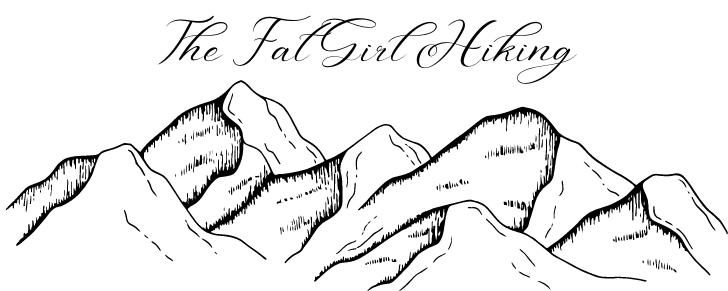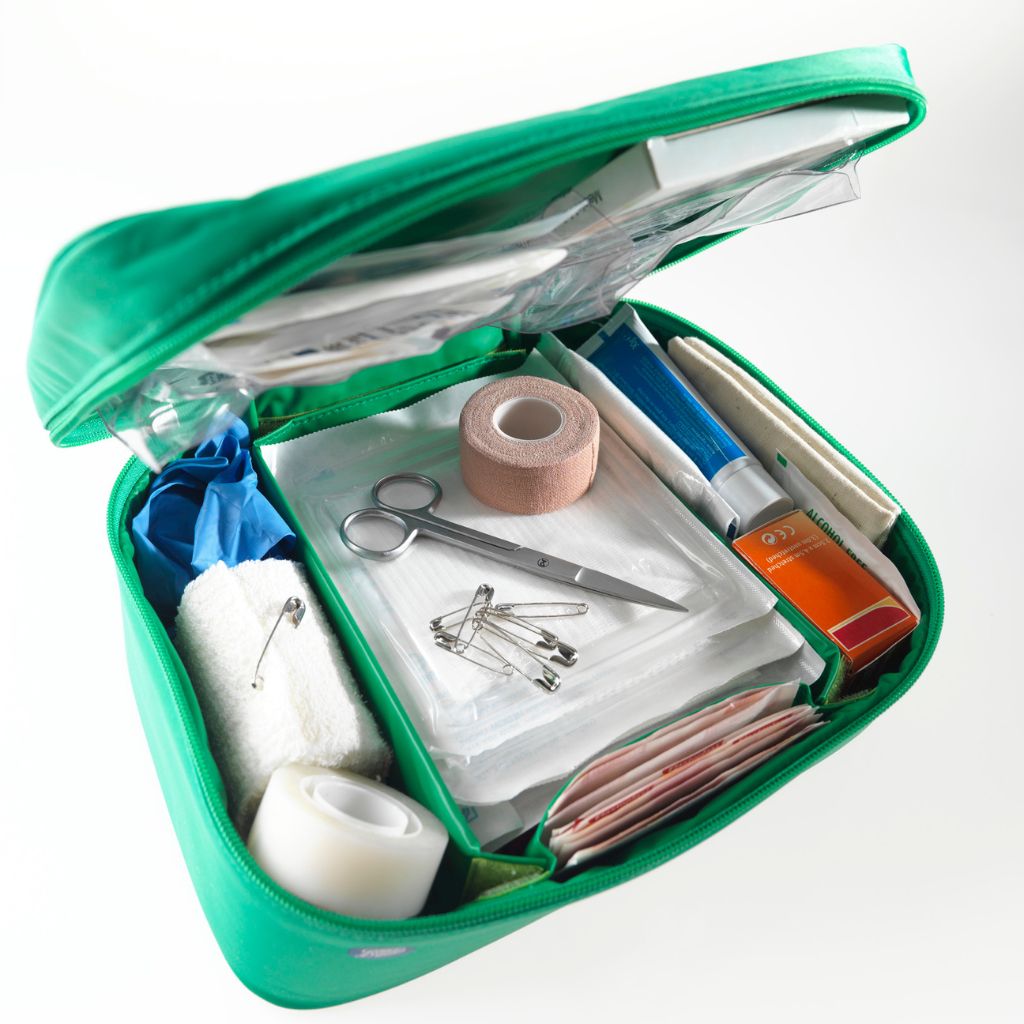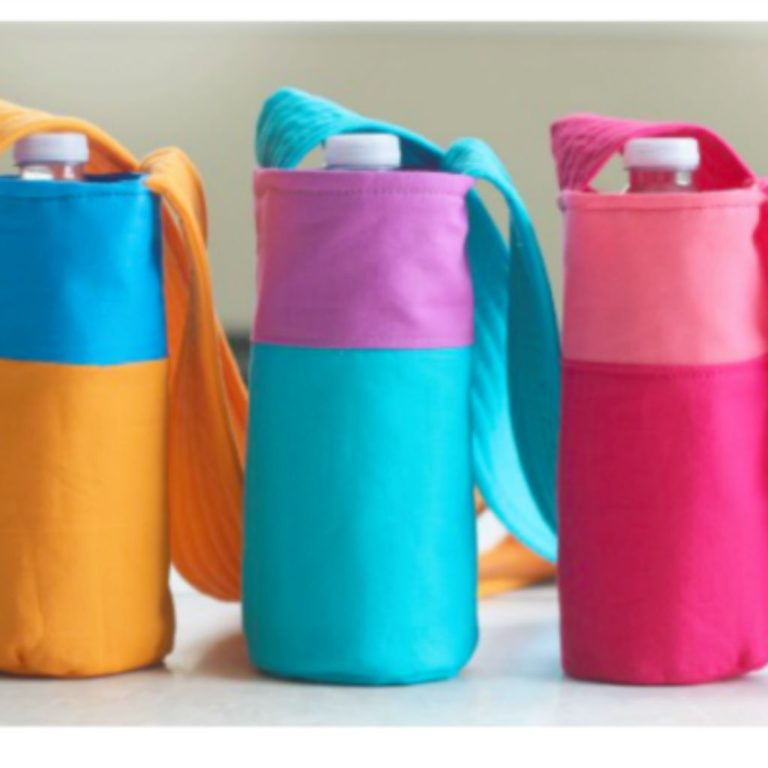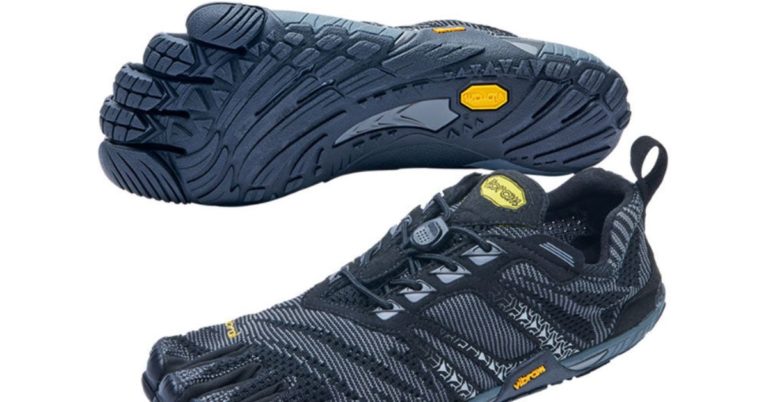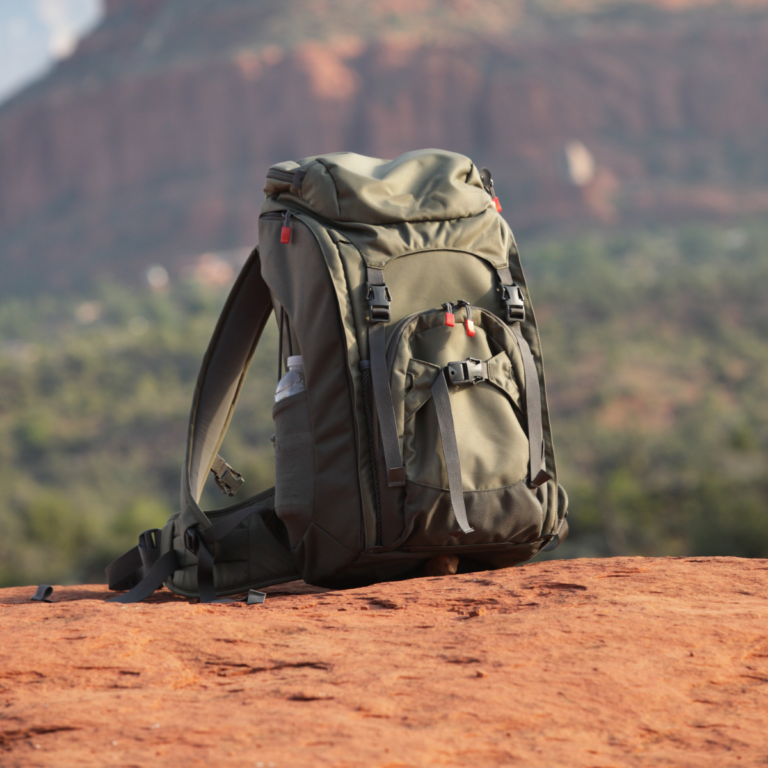The Ultimate Hiking First Aid Kits For All Budgets

First Aid is First Priority
When making the decision to adventure into the backcountry, you’re also making another decision, and a serious one at that. You’re deciding to take your safety and survival into your own hands in a new, potentially dangerous environment. When hiking or backpacking, there are many obstacles you could face. An encounter with an animal, taking a fall, getting sick, and more can all pose a threat to your safety and your good time. Sh*t happens in the wilderness, in more ways than one, and it’s important to be prepared for all of it with a hiking first aid kit. Now, I’m not saying you should let potential dangers dissuade you from hiking. But you should be prepared for anything you may encounter. When it comes to hiking first aid, plan for the worst and hope for the best.
Depending on how long your hike is, whether you’re going to be in the wilderness overnight, and how far you are from civilization can all play a role in deciding what you’ll need in your first aid kit. If you’re going on a 2-mile hike, your kit is going to be a lot leaner than if you’re trekking through the John Muir Wilderness for 10 days. We have curated a list of some of the best hiking first aid kits. We will also take you through how to do a DIY first aid kit if that’s more your speed. Who doesn’t love customization options?!
Common “Trailments” (Trail Ailments, Get it?!)
Before we dive into the best hiking first aid kits, it’s important to have foundational knowledge as to what injuries or medical issues you could face on the trail. And what can actually be treated by these first aid kits. Here are some of the top “Trailments” and what supplies you may need for each:
Nausea, Vomiting, Diarrhea (NVD Illnesses)
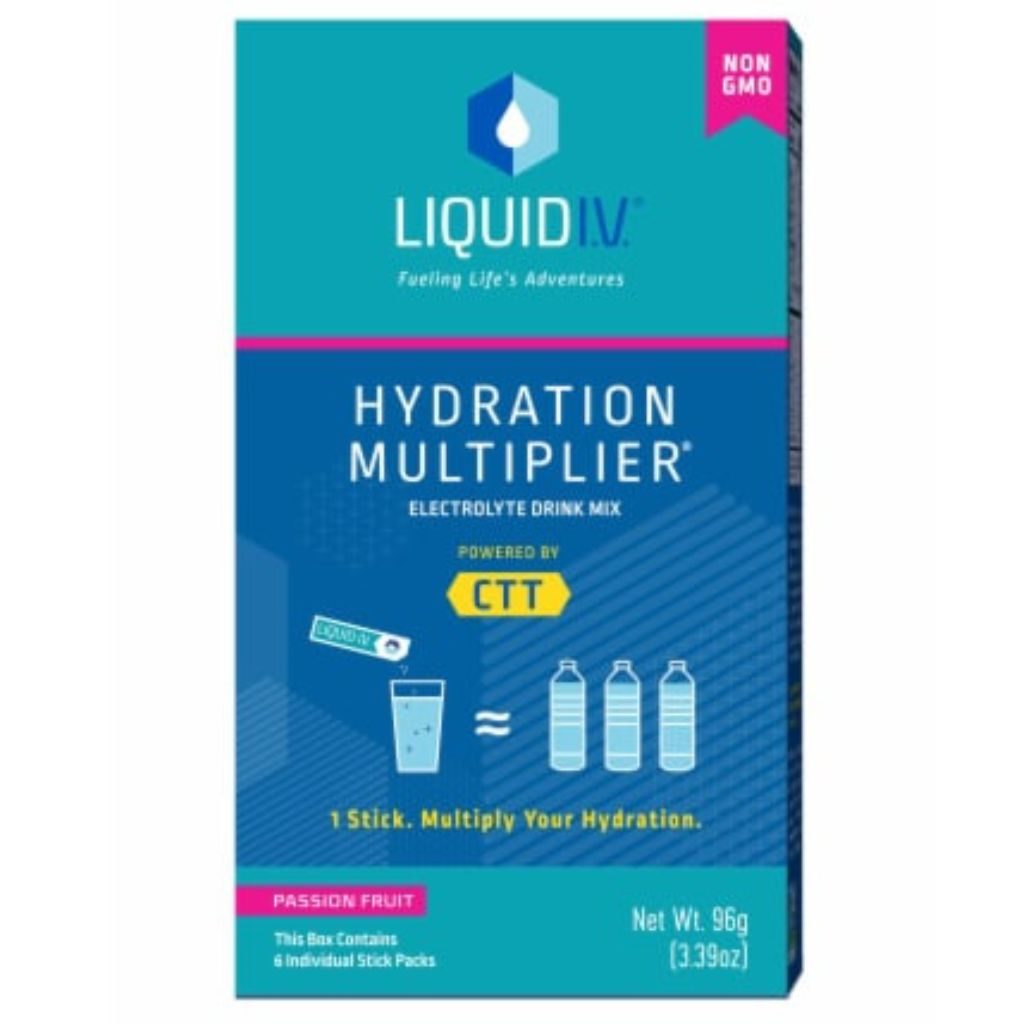
I can’t say I have personally experienced any of these on the trail, but I can’t think of anything more unpleasant than trying to climb down a mountain as sh*t is running down my leg, but it happens in the wilderness! Especially on overnight trips when you may be drinking from rivers or lakes. If that water isn’t boiled or treated properly, it can make you very sick. Bring meds like Tums, Pepto-Bismol to treat your symptoms. As well as electrolytes to replenish the dehydration that comes with this very fun trailment.
Sprains and Strains
Soft tissue injuries account for roughly 80% of trail injuries. On the trail, you’re putting your body through extreme activity for a prolonged period of time. I have had hiking partners and myself deal with rolled ankles, knee injuries, and other pulled muscles while in the backcountry. If you can find a cold-water source to soak your muscle in, that can help a lot. You’ll need a splint, bandage, or athletic tape to help patch up the injury until you can hobble to civilization. This is also why you always want to have painkillers with you on the trail. Sometimes you have no option but to work through the pain.
Cuts and Scrapes
A rogue tree branch, sneaky rock, or bout of clumsiness can wreak all kinds of havoc on the trail. You might have scratches that you can just “rub some dirt in,” but others may require a bit more attention. Have bandages and gauze with you on all types of excursions. On longer trips, you should also have a suture kit, skin tape, and crazy glue to deal with cuts and scrapes.
Blisters
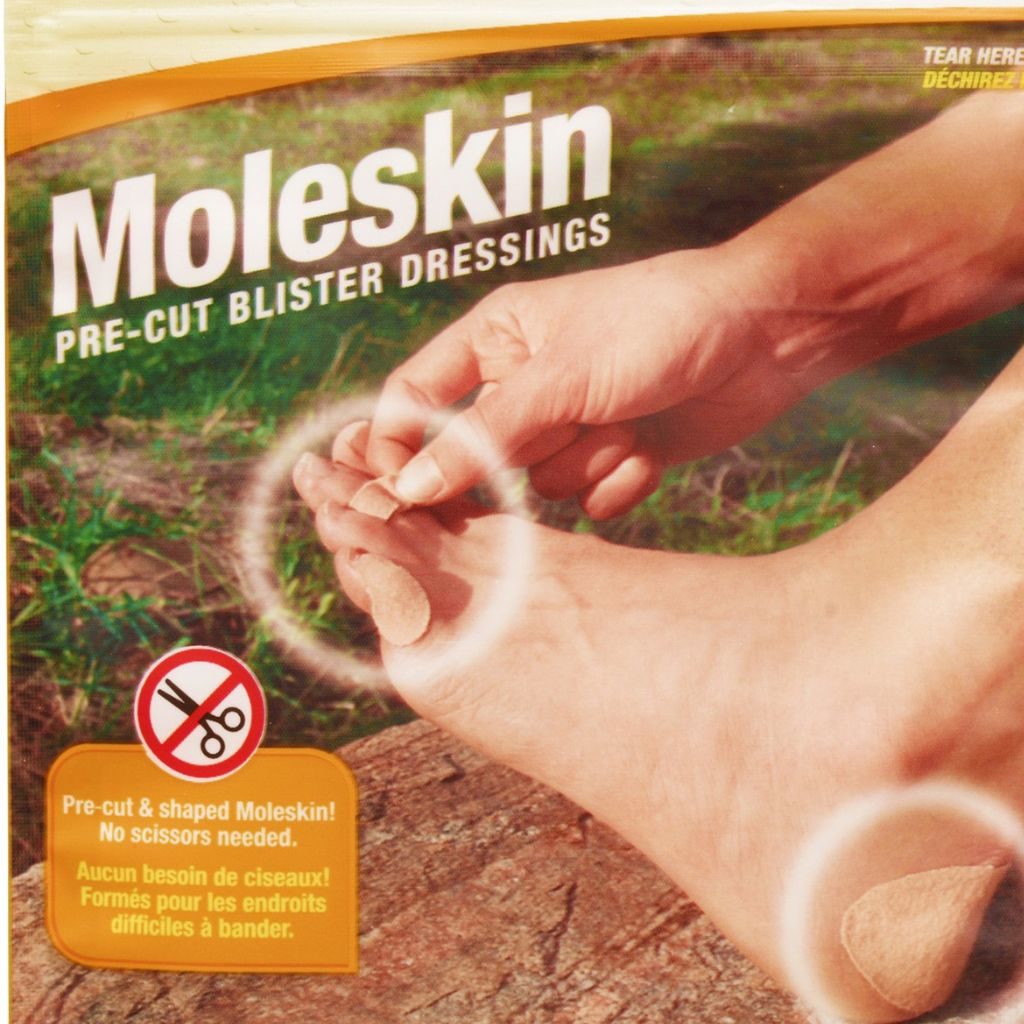
While blisters are usually not dangerous, but they’re as painful as your first breakup, and about as annoying as it too. Blisters can turn a fun day exploring into a day of HELL. As a preventative measure, I love wearing toe-sock liners under my hiking socks to help prevent blisters on my toes. But once a blister has made an appearance, you’ll want bandages and moleskin to help cover it and make it tolerable enough to deal with.
Day Hiking First Aid Kits
If you’re going on a day hike, you’ll likely need a lot less in your hiking first aid kit than you would for an overnight trip. Day hikes can still end up being long and have their fair share of dangers. You’ll have to find the right balance in terms of bringing enough that you have peace of mind, but not lugging excessive amounts of bandages and tourniquets up a mountain. The more weight you’re carrying, the harder those inclines will feel.
On day hikes, you may experience cuts, blisters, headaches, and more common ailments. Though, there is always the chance something more serious could happen. To find the balance of having what you need but not overpacking, I’m targeting lightweight kits that have basic supplies for some of the most common day hike obstacles. Here are some of my favorite hiking first aid kits for day hikes:
Top Rated Hiking First Aid Kits
SURVIVEWARE Waterproof All-Purpose Small First Aid Kit
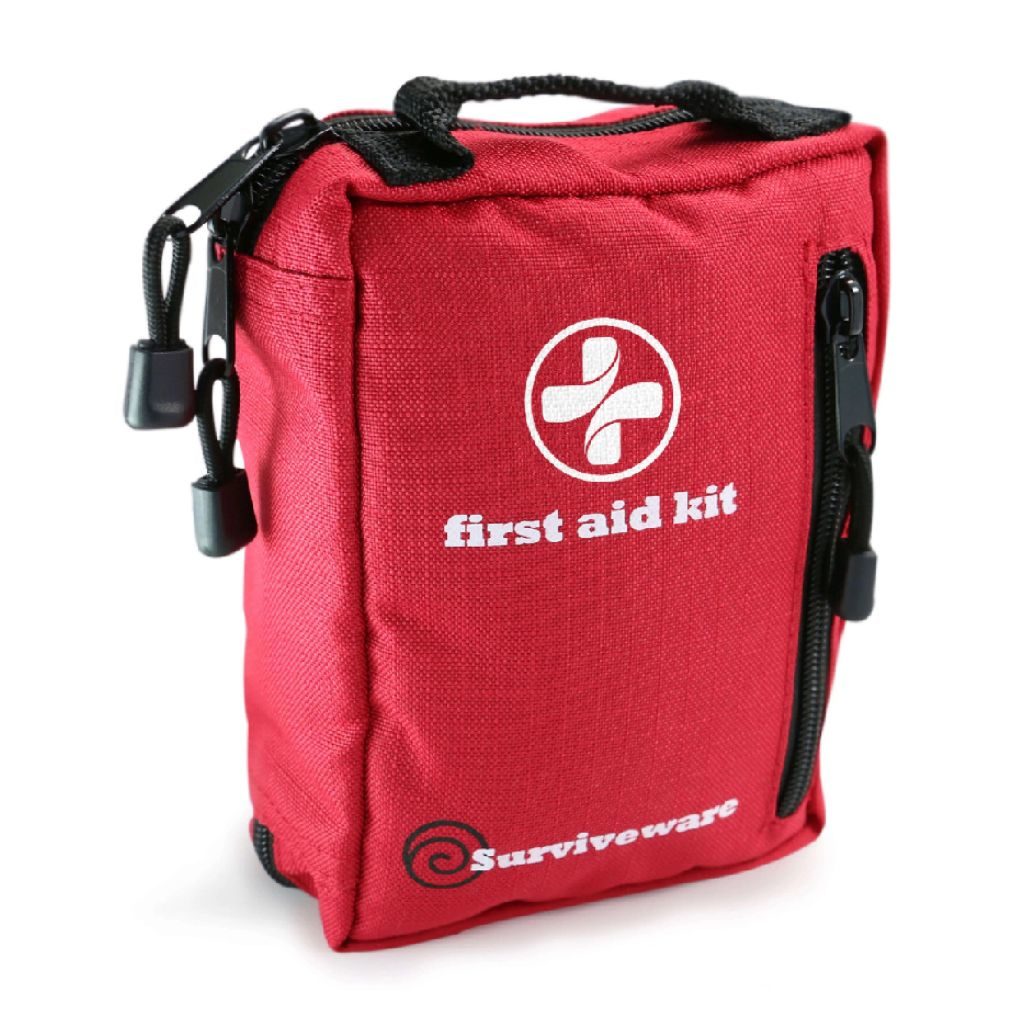
This kit contains 100 carefully selected pieces of first aid equipment! Such as bandages, gauze, an emergency blanket, tweezers, a whistle, and more. In an emergency, you won’t have time to rummage around hoping to find what you need. Each inner sleeve is organized and labeled by category to help you locate what you need quickly. The kit leaves a little extra space to add supplemental supplies you may need such as medication or moleskin.
Pros:
- This hiking first aid kit is organized and compact so it can fit in your day pack.
- If you don’t have room inside your pack, you can use the outer clip to secure it outside your pack.
- If you’re like me… It’s not unheard of for you to fall into a puddle or drop something during a water crossing. A good hiking first aid kit needs to be waterproof! So your most important safety items don’t get damaged from a little clumsiness.
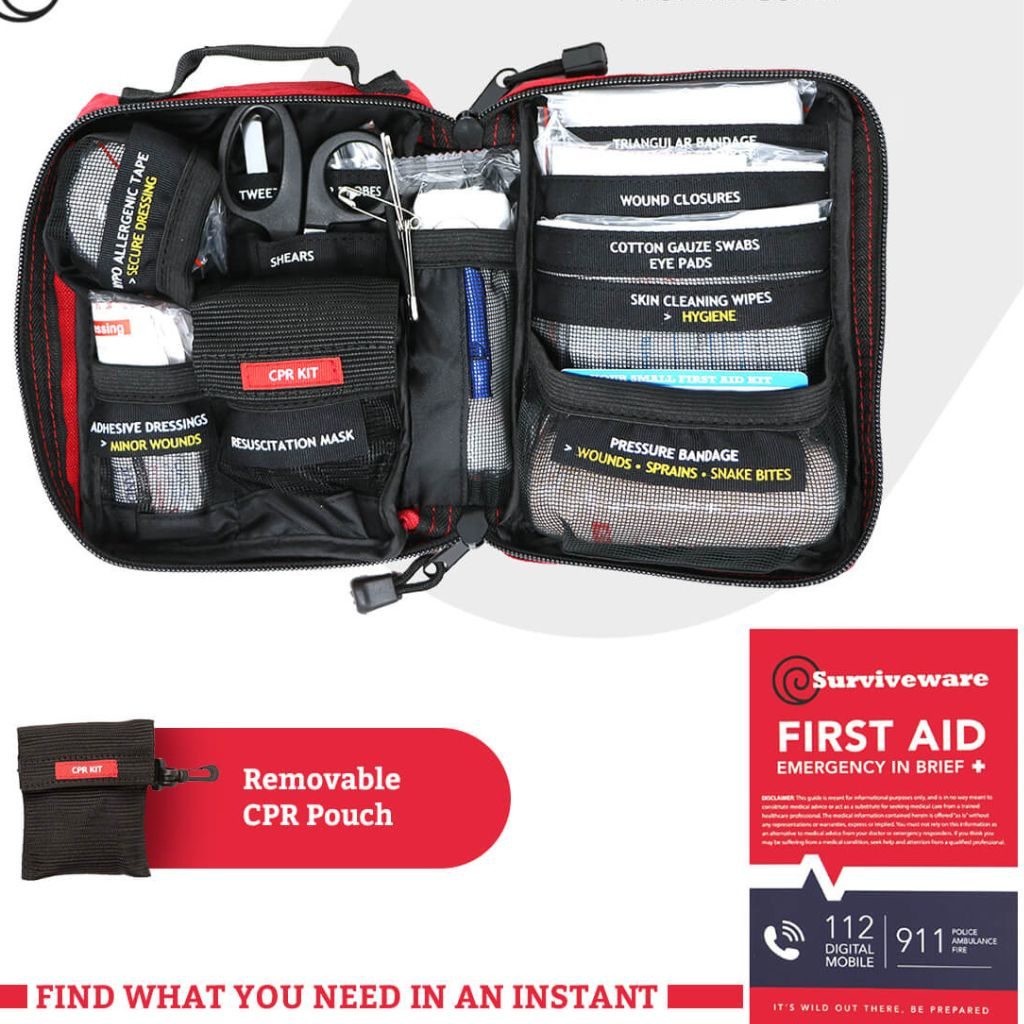
Cons:
- Coming in at just under $40, this kit isn’t as budget-friendly as some of the other hiking first aid kits.
- It does not come with any ointments for cuts, scrapes, or burns, so you’ll have to add those in if needed.
All in all, this first aid kit is great for hikers who want to be prepared for the backcountry but aren’t looking to carry a bulky, heavy piece of equipment. And hey, if you’re hiking with friends, you can always pawn this off to one of them for an even lighter pack.
Budget-Friendly Hiking First Aid Kit
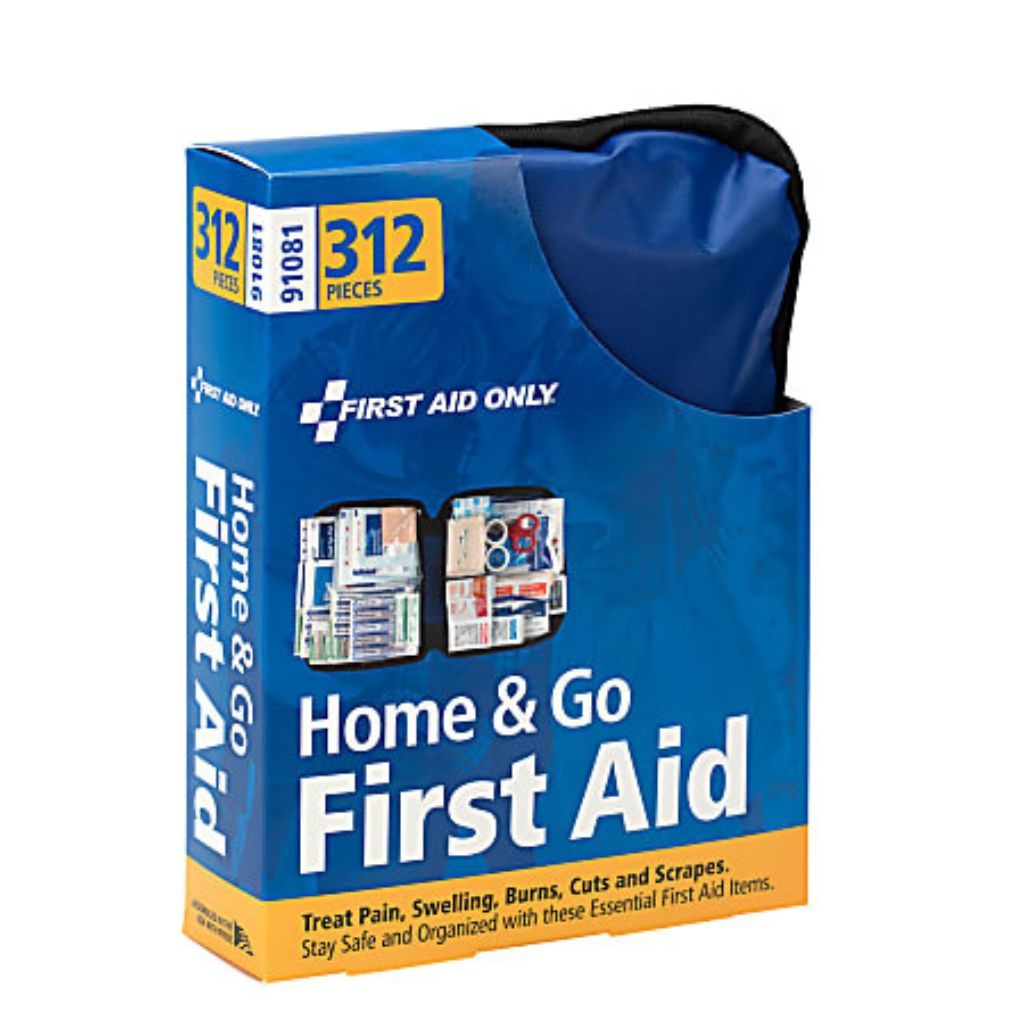
If you’re just getting into hiking, it can be tough to pour money into new equipment. Especially before you’re even sure you’ll be doing it regularly. Or maybe you are just looking to stay safe without breaking the bank. Either way, finding a hiking first aid kit on a budget is doable. You want to ensure you have your basic supplies, but you won’t be doing open-heart surgery on the mountain. Well, if you do, you’re much more prepared than I am, anyway. My favorite budget first aid kit has everything you need but without some of the bells and whistles other kits have.
Pros:
- This kit has 312 pieces of first aid equipment, so you’ll be fully stocked with bandages, ointments, and pain killers for some of the most common “trailments.”
- The First Aid Only Kit is separated by plastic liners on the inside, creating different compartments for your equipment.
- Inside the pack is a first aid handout from Red Cross so you’ll have your basic first aid knowledge at your fingertips when you need it most.
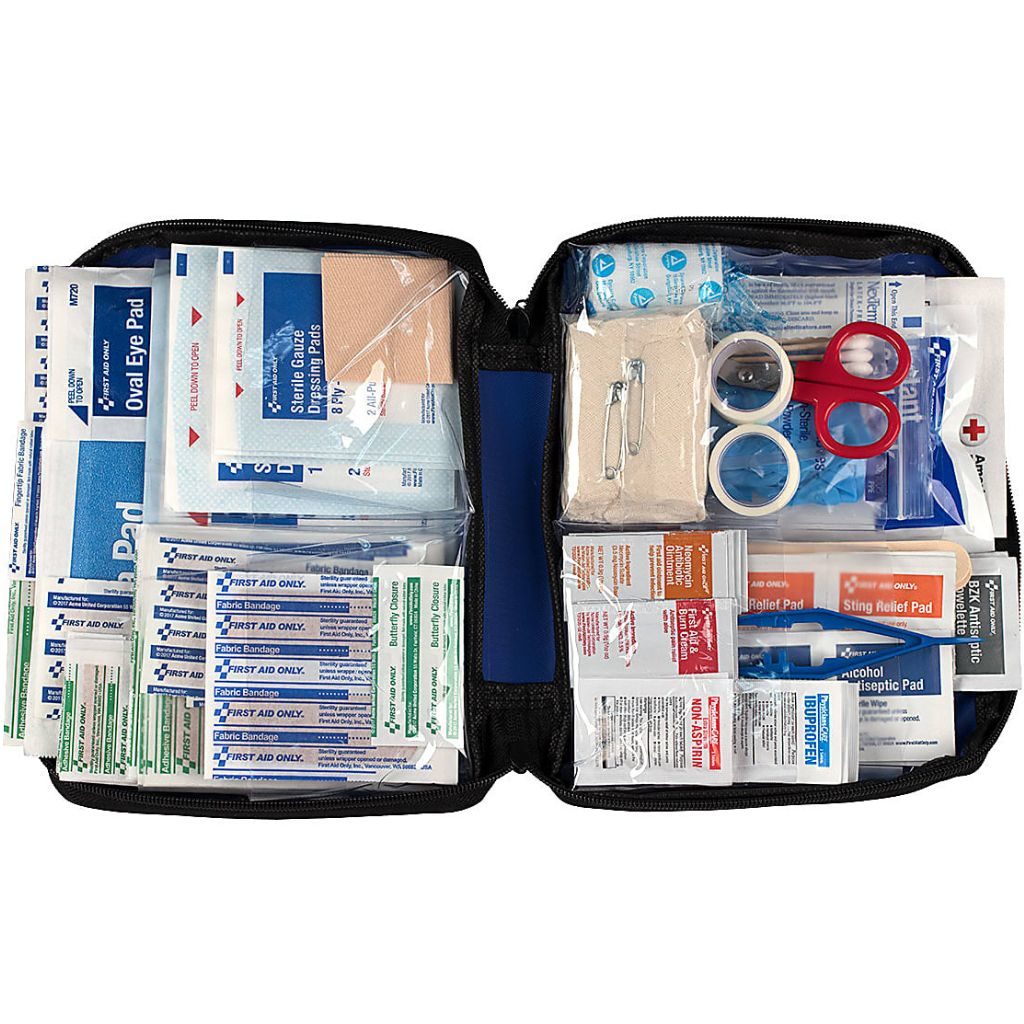
Cons:
- Things slide around easily in the compartments so the bag becomes difficult to navigate more quickly than it should.
- The actual equipment in the kit isn’t as nice or durable as more expensive kits. You get what you pay for!
- This kit doesn’t come with very much moleskin. You may need to add that before you take it out on your maiden voyage.
This is a great kit to start out with if you’re new to hiking. Once you decide that you want to pursue the hobby for a bit longer and plan on sticking with it, I’d recommend investing in a kit that’s a bit more durable and will last longer. This is a great, budget-friendly option for those who want to dip their toes in the water without too much financial investment.
DIY First Aid Kit for Day Hikes
If you’re like me, you might love sorting through all different equipment and first aid supplies to build your own kit. Each person is different, and each person needs different supplies. It can be beneficial to build your own hiking first aid kit. I always feel a bit like a spy when I’m putting together my first aid kit, so it adds to the fun! Here’s what you need to know when building your own hiking first aid kit:
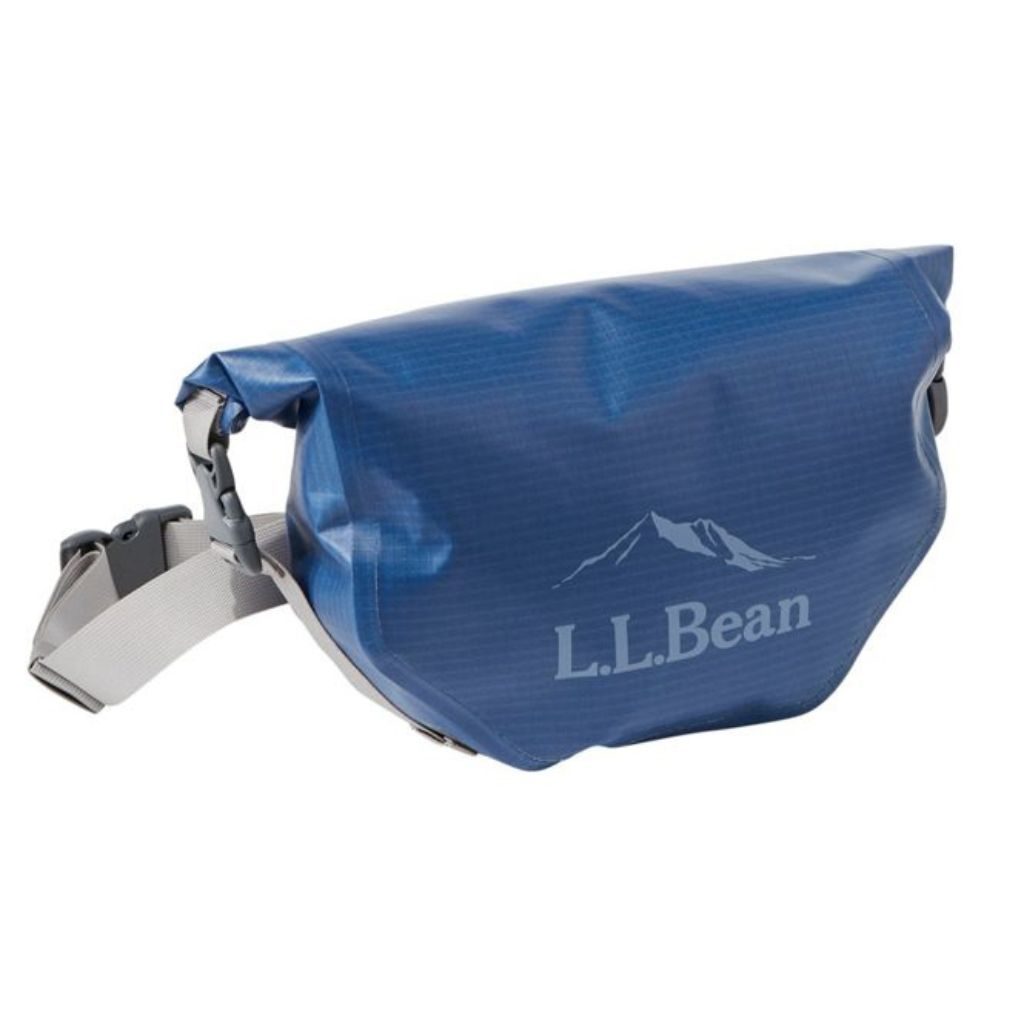
- Firstly, be sure to include the following: Aspirin, Ibuprofen, medical tape, blister treatment, knife and scissors, tweezers, elastic wrap, insect sting relief cream, antiseptic wipe, antibiotic ointment, an assortment of bandages, rolled gauze, splints, safety pin, hand sanitizer, butterfly bandages, and anything else you may need such as prescription medication.
- Ensure your first aid kit is waterproof.
- Organize your kit in a way that makes sense to you. Make sure you get familiar with where things are and maybe even make a cheat sheet for yourself! My brain turns to mush in stressful situations! I don’t want to be spending 5 minutes in an emergency looking for the supplies I need.
Pros:
- The DIY option is fully customizable. I know I usually go through more moleskin because I get a lot of blisters, so I can pack what I know I’ll need.
- Building your own hiking first aid kit will get you acquainted with the supplies and their purpose, instead of just relying on a premade kit and hoping it’ll have what you need.
- It’s a lot of fun to build a kit! Get your friends together and have a first-aid-kit-making night to help each other stay safe.
Cons:
- This can end up being more expensive than a pre-made kit if you’re not careful. If you and some friends are all making DIY first aid kits, buy supplies in larger quantities and divvy it up to save money.
- It takes time! I know I procrastinate on packing up for my trips from time to time. And this is not something you can save until the last minute to do.
- You could forget important supplies. I recommend making a checklist of things you’ll need and physically crossing out each item as it gets added.
Building your own first aid kit is almost a rite of passage. If you continue hiking and backpacking, chances are you’ll end up doing it someday. It’s a great option and one that I highly recommend trying out at some point. If your Pinterest crafts never turn out right and DIY isn’t your thing, there are a lot of stellar pre-made kits to choose from!
Backpacking First Aid Kits
As the trips get longer, the number of things that could potentially go wrong increases. With overnight backpacking trips, you’re not just preparing for one day, you could be preparing for weeks or even months in the wilderness. I’m not trying to be a helicopter mom here, but you really do need to be prepared for anything that could happen in the backcountry. I have had trips where I’m over 20 miles from anywhere I could get help, so my safety is in my own hands. Search and rescue missions can be difficult to coordinate. They can also take a long time, and cost a lot of money. So you have to be able to depend on yourself and your backpacking partners when you need it most. The stakes are even higher than they were for your college entrance exams, so it’s time to pay attention!
Top Rated Hiking First Aid Kit
Adventure Medical Kits Mountain Series, Backpacker Medical Kit
This is my favorite weekender kit for backpacking. It’s lightweight, durable, waterproof, and has everything you need when you’re staying in the wilderness overnight. The twinkle of the stars is beautiful, but an emergency under the stars is scary! With this kit, you know it’ll have what you’re looking for and the elements won’t ruin anything along the way. A torrential downpour can soak your whole pack, but this puppy will stay dry through it all! I’m a sucker for clever organization hacks and this pack unfolds like a flower! Each compartment labeled by injury type so you won’t spend a second searching for your equipment.
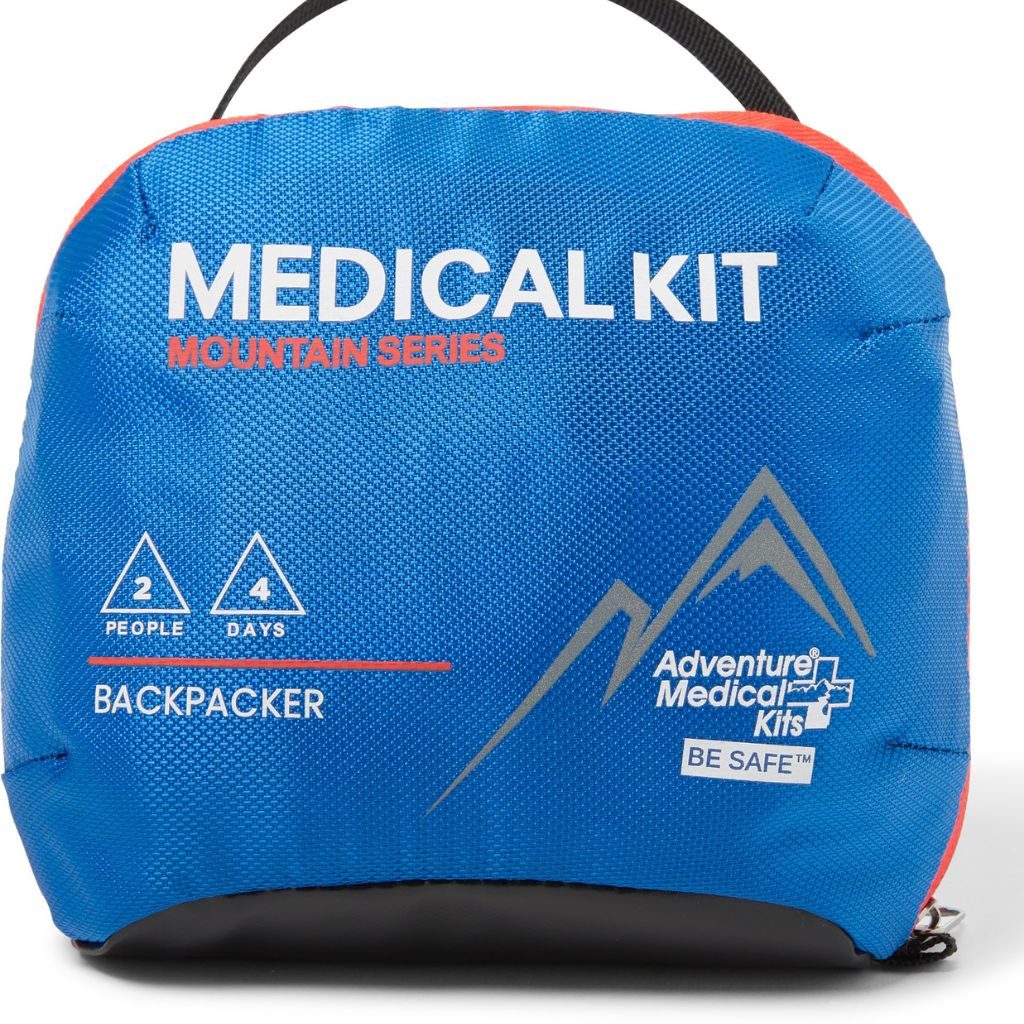
Pros:
- This pack is lightweight but has everything you need for overnight trips! It contains bandages, after bite wipes, wound irrigation tools, sterile dressings, EMT shears, and a wilderness first aid manual. I think it’s secretly a Mary Poppins bag. You can keep pulling things out from it even though it barely weighs anything!
- As one of the most durable hiking first aid kits on the market, this case is nearly impossible to puncture and is reinforced along the bottom to keep your emergency supplies safe!
- The quality of the equipment inside is top-notch. You’ll be impressed by how well the bandages stick, how sturdy the scissors are, and more.
Cons:
- Though this kit has plenty of moleskin sheets included, you may need to add a few more items for blister care, such as foam padding or Engo patches.
- For basic bandages, I recommend throwing a few extras in. I don’t think this pack has enough bandages, but there is plenty of room to add a few more in.
The Backpacker Medical Kit is meant for 1-2 people for a couple of nights in the backcountry. If you’re by yourself, it could last a couple of extra nights. For longer trips, check out the Explorer Kit by the same brand. You’ll get the fantastic quality of this kit, but the pack will be a bit more robust and ready for a longer trek.
Budget Hiking First Aid Kit
Coleman All Purpose First Aid Kit
Coming in at just under $20, this is a wonderfully robust kit that won’t break the bank. It has all the basics you need and is meant for a few people, so it’ll have supplies to last on a multi-day trip. This kit is well organized, and things are easy to find in a pinch. Since it’s not meant solely for backpacking, it’s a little bit bulkier than the other kits we have discussed today, but it’s less than 1 lb. and will have what you need!
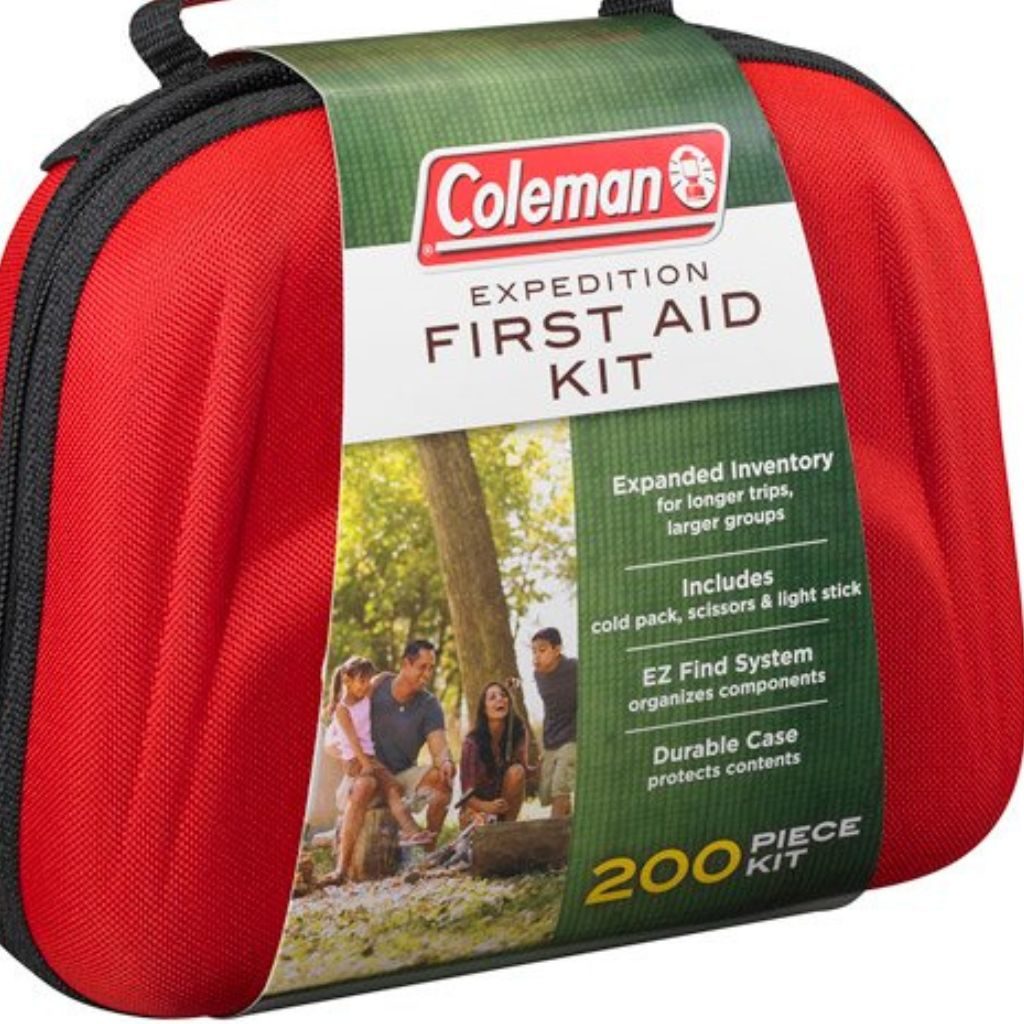
Pros:
- The Coleman kit boasts an affordable price point and comes from a well-respected outdoor brand.
- The carrying case has a hard shell to protect supplies and keep things from getting smashed.
- In a budget kit it’s rare to see things like tweezers, cold packs, and ointments, but this one has all of those items.
Cons:
- The carrying case is not waterproof, which is a big downside while you’re in the backcountry.
- It’s not as sleek or lightweight as some of the other, more expensive options.
Coleman knows what they’re doing when it comes to outdoor gear, and it shows with this hiking first aid kit. If you’re looking to dabble in backpacking, start with this kit, then as your love affair with the sport grows, you can look at some of the higher price-point options.
DIY Hiking First Aid Kit for Backpackers
If you’re going to try an overnight trip or plan on being in the backcountry for multiple days, you’ll need a more robust DIY first aid kit than the one you’d bring for shorter day hikes. If you have already created one for day hikes, that’s a good place to start but you’ll want to add some supplemental supplies. Here is a list of additional supplies I’d throw in a backpacking first aid kit that aren’t in the day hike kit:
- Include all supplies from the DIY day hiking kit, but up the numbers of each. For instance, instead of a few bandages, bring 4-5 of each kind so it’ll last a bit longer to treat injuries or “trailments” along the way.
- Add these items: CPR mask, sam splint, emergency blanket, tick key, suture kit, skin closure strips, extra gauze, crazy glue, Tums, Pepto-Bismol, and sterile gloves.
With this DIY kit for longer backpacking trips, you’ll want to ensure you have robust packaging that is durable, lightweight, and waterproof. You’ll see many of the same pros and cons here as you would with the day hiking first aid kit above.
Have Fun, Be Safe, and Don’t Be Dumb
It’s critical to have the best hiking first aid kit possible when it’s your last source of protection. When you’re in the wilderness, only you and your hiking partners can help you! So stay safe out there and be prepared for the worst to happen. The hope is that you never have to use the supplies in your hiking first aid kit, aside from some moleskin and a bandage, but the reality is that you may need more when you least expect it.
So many of the trail ailments that hikers and backpackers face are preventable. The first step in any first aid treatment is prevention. Make sure you’re taking the time to warm up your muscles, tend to your cuts and scrapes, and listening to your body’s cues. Your body will usually start telling you something is wrong with subtle cues. If you’re severely dehydrated, you may get a slight headache and fatigue at first. Then quickly you’ll spiral into more negative side effects. On the trail, it’s so important to be in tune with your body, listen to its early cues, and don’t push yourself when you shouldn’t. If you focus on prevention and being smart, your first aid kit may become nothing more than extra weight and peace of mind, but you should always, always, always have it at the ready.
